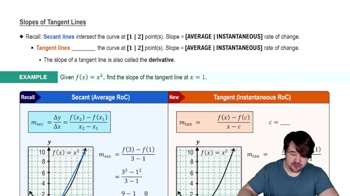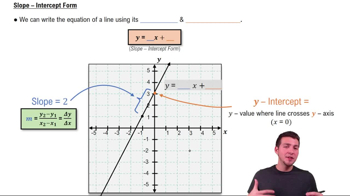Derivatives and tangent lines
a. For the following functions and values of a, find f′(a).
f(x) = √2x+1; a= 4
 Verified step by step guidance
Verified step by step guidance Verified video answer for a similar problem:
Verified video answer for a similar problem:



 5:13m
5:13mMaster Slopes of Tangent Lines with a bite sized video explanation from Patrick
Start learning